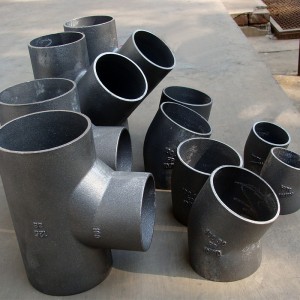- Afrikaans
- Albanian
- Amharic
- Arabic
- Armenian
- Azerbaijani
- Basque
- Belarusian
- Bengali
- Bosnian
- Bulgarian
- Catalan
- Cebuano
- China
- China (Taiwan)
- Corsican
- Croatian
- Czech
- Danish
- Dutch
- English
- Esperanto
- Estonian
- Finnish
- French
- Frisian
- Galician
- Georgian
- German
- Greek
- Gujarati
- Haitian Creole
- hausa
- hawaiian
- Hebrew
- Hindi
- Miao
- Hungarian
- Icelandic
- igbo
- Indonesian
- irish
- Italian
- Japanese
- Javanese
- Kannada
- kazakh
- Khmer
- Rwandese
- Korean
- Kurdish
- Kyrgyz
- Lao
- Latin
- Latvian
- Lithuanian
- Luxembourgish
- Macedonian
- Malgashi
- Malay
- Malayalam
- Maltese
- Maori
- Marathi
- Mongolian
- Myanmar
- Nepali
- Norwegian
- Norwegian
- Occitan
- Pashto
- Persian
- Polish
- Portuguese
- Punjabi
- Romanian
- Russian
- Samoan
- Scottish Gaelic
- Serbian
- Sesotho
- Shona
- Sindhi
- Sinhala
- Slovak
- Slovenian
- Somali
- Spanish
- Sundanese
- Swahili
- Swedish
- Tagalog
- Tajik
- Tamil
- Tatar
- Telugu
- Thai
- Turkish
- Turkmen
- Ukrainian
- Urdu
- Uighur
- Uzbek
- Vietnamese
- Welsh
- Bantu
- Yiddish
- Yoruba
- Zulu
Nov . 22, 2024 01:34 Back to list
casting of aluminum alloys
The Casting of Aluminum Alloys Techniques, Applications, and Innovations
Aluminum alloys are widely recognized for their diverse applications across various industries owing to their excellent mechanical properties, lightweight nature, and resistance to corrosion. Casting is one of the most popular methods for shaping aluminum alloys, allowing for intricate designs and complex geometries that are difficult to achieve through other manufacturing processes. Understanding the casting of aluminum alloys involves exploring various techniques, advantages, challenges, and recent innovations that enhance their usability.
Techniques of Aluminum Alloy Casting
Aluminum alloys can be cast using several methods, each suited for different applications and production volumes. The most common casting techniques include sand casting, die casting, investment casting, and permanent mold casting.
1. Sand Casting This traditional method involves creating a mold from sand mixed with a bonding agent. It is cost-effective for small production runs and is capable of producing large and complex parts. The flexibility in mold design makes it a popular choice for both prototyping and low-volume production.
2. Die Casting Known for its high production rates and excellent dimensional accuracy, die casting is often utilized for large-scale manufacturing of aluminum components. It involves forcing molten aluminum alloy into a reusable steel mold at high pressure. The result is a smooth surface finish and finer details, making it ideal for automotive and aerospace applications.
3. Investment Casting This process employs a wax pattern covered with a ceramic shell to create precise molds. After the wax is melted away, molten aluminum is poured into the mold. Investment casting is suitable for producing intricate shapes and allows for greater design freedom, although it is typically more expensive than sand or die casting.
4. Permanent Mold Casting In this method, molten aluminum is poured into a reusable metal mold. It offers a balance between the low cost of sand casting and the high accuracy of die casting, making it a preferred technique for producing nonferrous alloys.
Applications of Aluminum Alloy Castings
casting of aluminum alloys

Aluminum alloy castings find applications in numerous sectors including automotive, aerospace, electronics, and construction. In the automotive industry, aluminum castings are used for engine blocks, transmission cases, and structural components due to their lightweight and strong nature, contributing to fuel efficiency and reduced emissions. In aerospace, aluminum alloys are integral for aircraft parts where weight reduction is paramount. Moreover, the electronics sector utilizes aluminum castings for housings and heat sinks, capitalizing on the metal's thermal conductivity and corrosion resistance.
Challenges in the Casting Process
While aluminum alloy casting offers numerous advantages, several challenges persist. One major issue is the susceptibility of aluminum to contamination, which can lead to defects in the casting. This could stem from oxidation of the molten metal or impurities in the sand or molds. Moreover, achieving uniform cooling rates is crucial to minimize thermal stress and warpage. Lastly, the complexity of the designed parts can lead to difficulties in achieving desired mechanical properties and surface finishes.
Innovations in Aluminum Alloy Casting
Advancements in technology are continually improving the casting process. The integration of Computer Numerical Control (CNC) technology allows for greater precision in machining cast components. Additionally, the use of advanced simulation software aids in predicting flow patterns and solidification behaviors, reducing trial-and-error in mold design.
3D printing technology is revolutionizing the casting industry as well. It enables the production of sand molds and cores with complex internal geometries that were previously impossible to manufacture. This innovation can significantly reduce lead times and costs while increasing design flexibility.
Conclusion
The casting of aluminum alloys is a versatile and vital manufacturing method, shaping the future of several industries. By understanding the various techniques, applications, and innovations in this field, manufacturers can leverage the benefits of aluminum alloys to create lightweight, durable, and efficient products. As technology continues to evolve, the realm of aluminum alloy casting will undoubtedly expand, paving the way for new possibilities and advancements in design and manufacturing.
-
Premium Cast Iron Water Main Pipe: Durable, Corrosion-Resistant
NewsAug.03,2025
-
Durable Cast Iron Water Mains | AI-Optimized Systems
NewsAug.02,2025
-
High-Efficiency Propane Boiler for Baseboard Heat | Save Energy
NewsAug.01,2025
-
Premium Source Suppliers for Various Gray Iron Castings
NewsJul.31,2025
-
Durable Cast Iron Water Main Pipes | Long-Lasting
NewsJul.31,2025
-
High-Quality Cast Iron Water Main Pipe for Durable Infrastructure
NewsJul.30,2025


